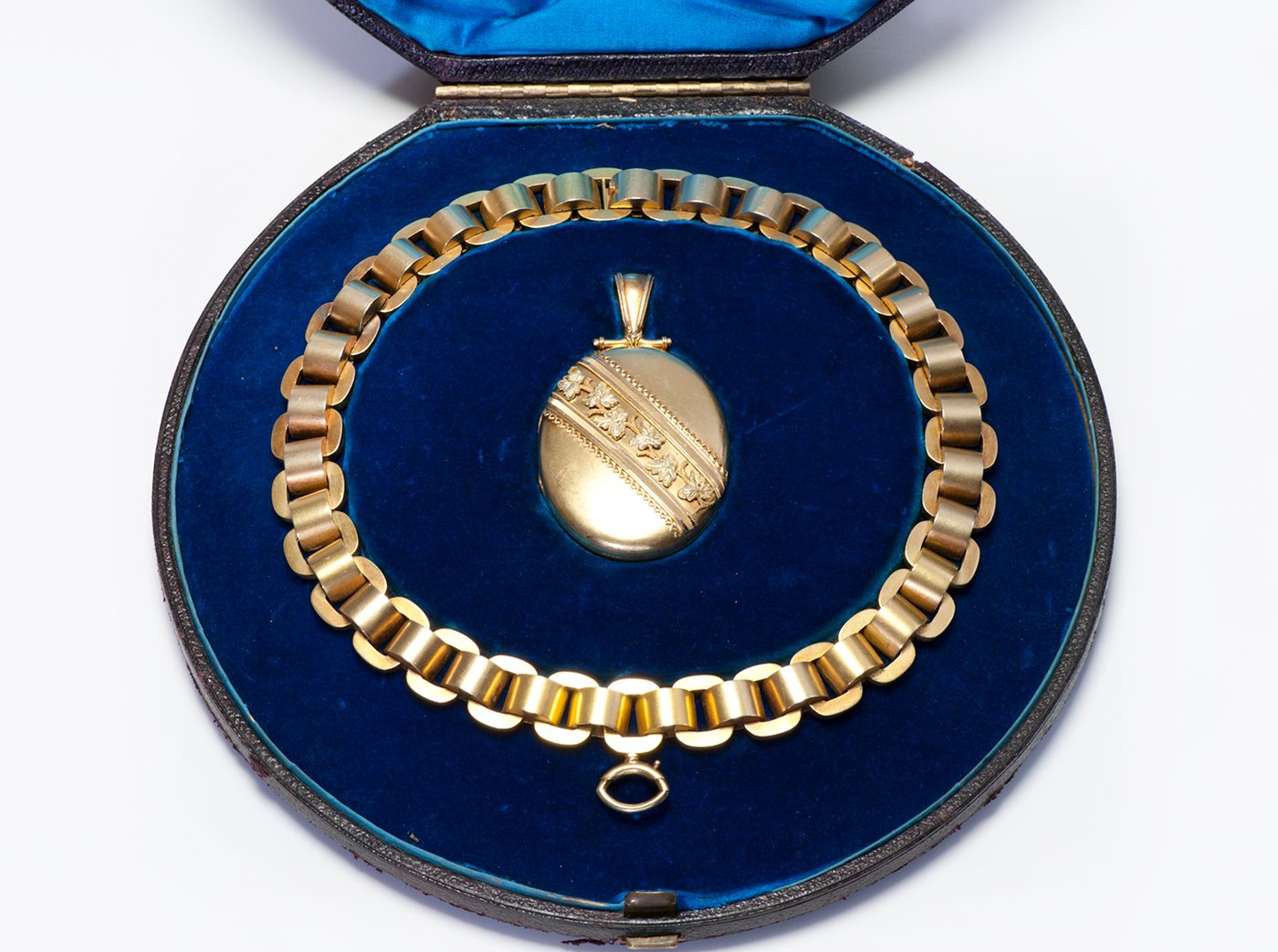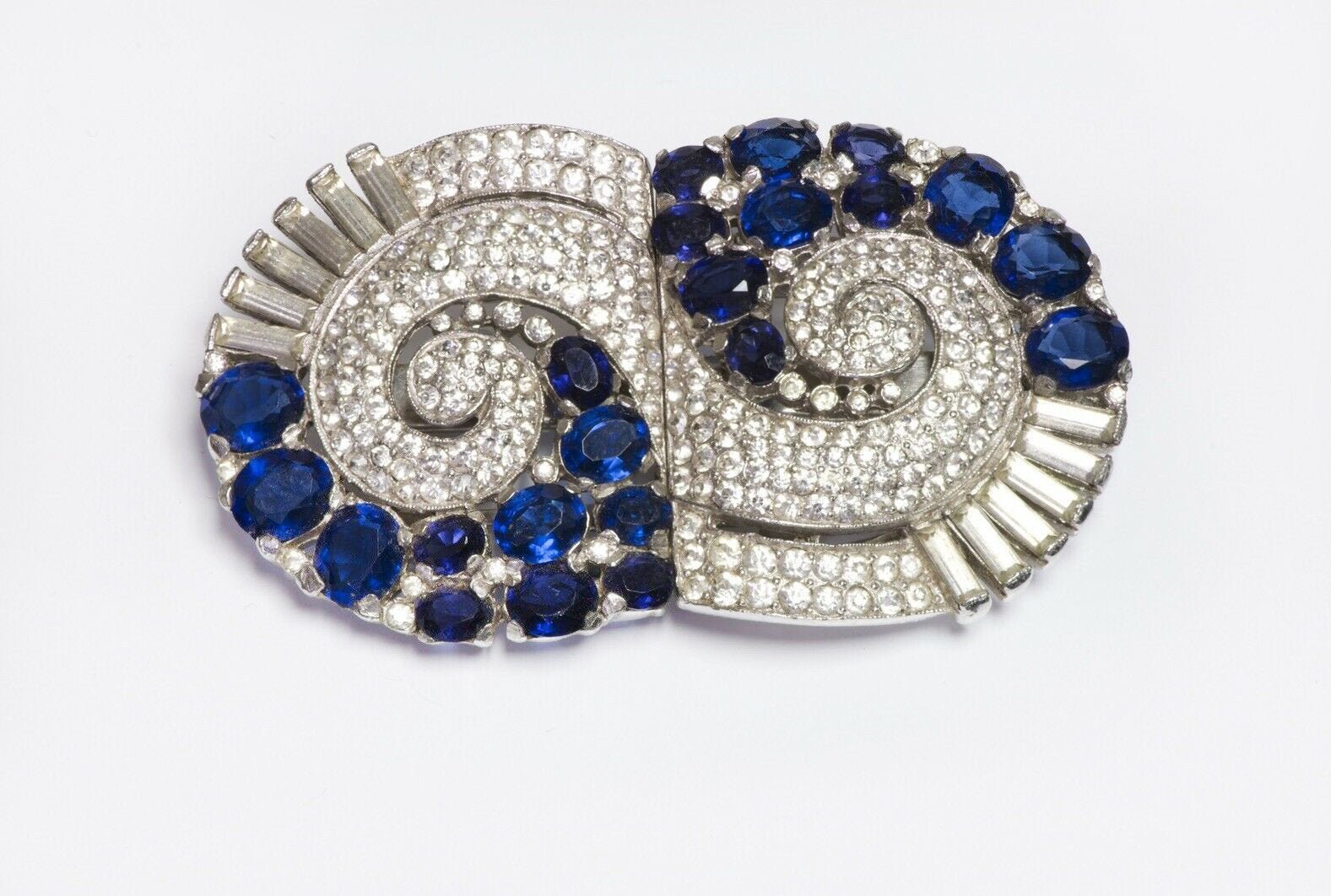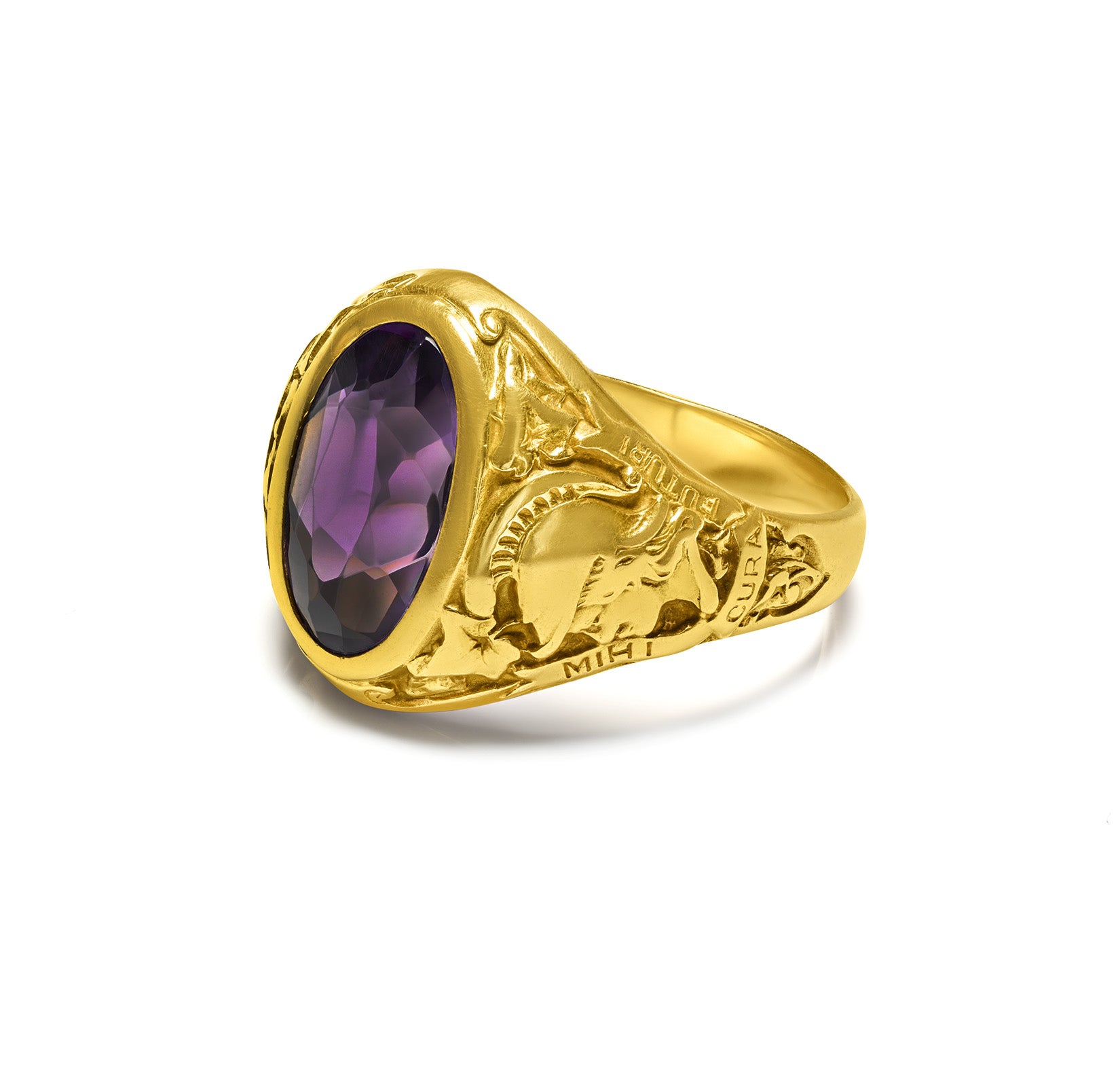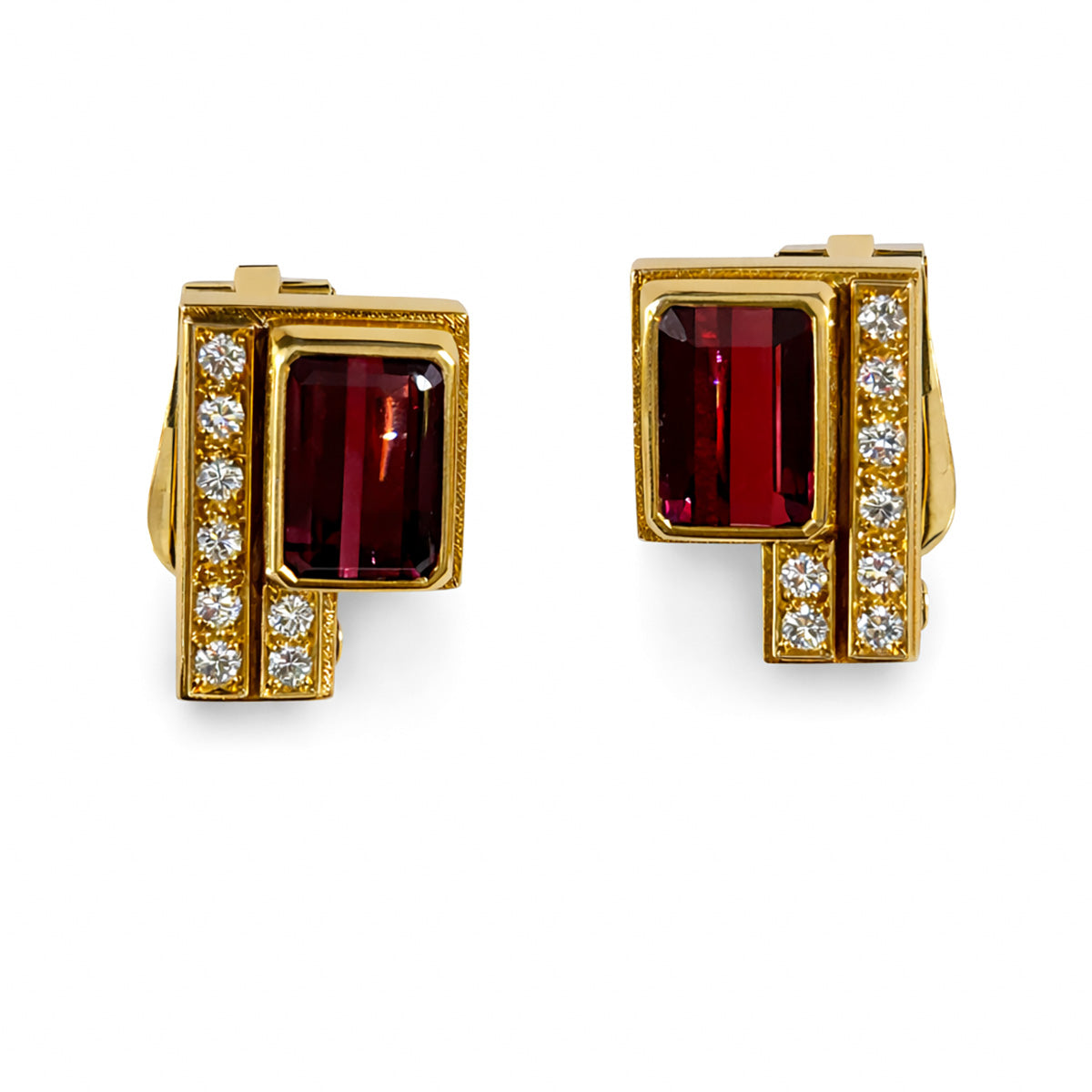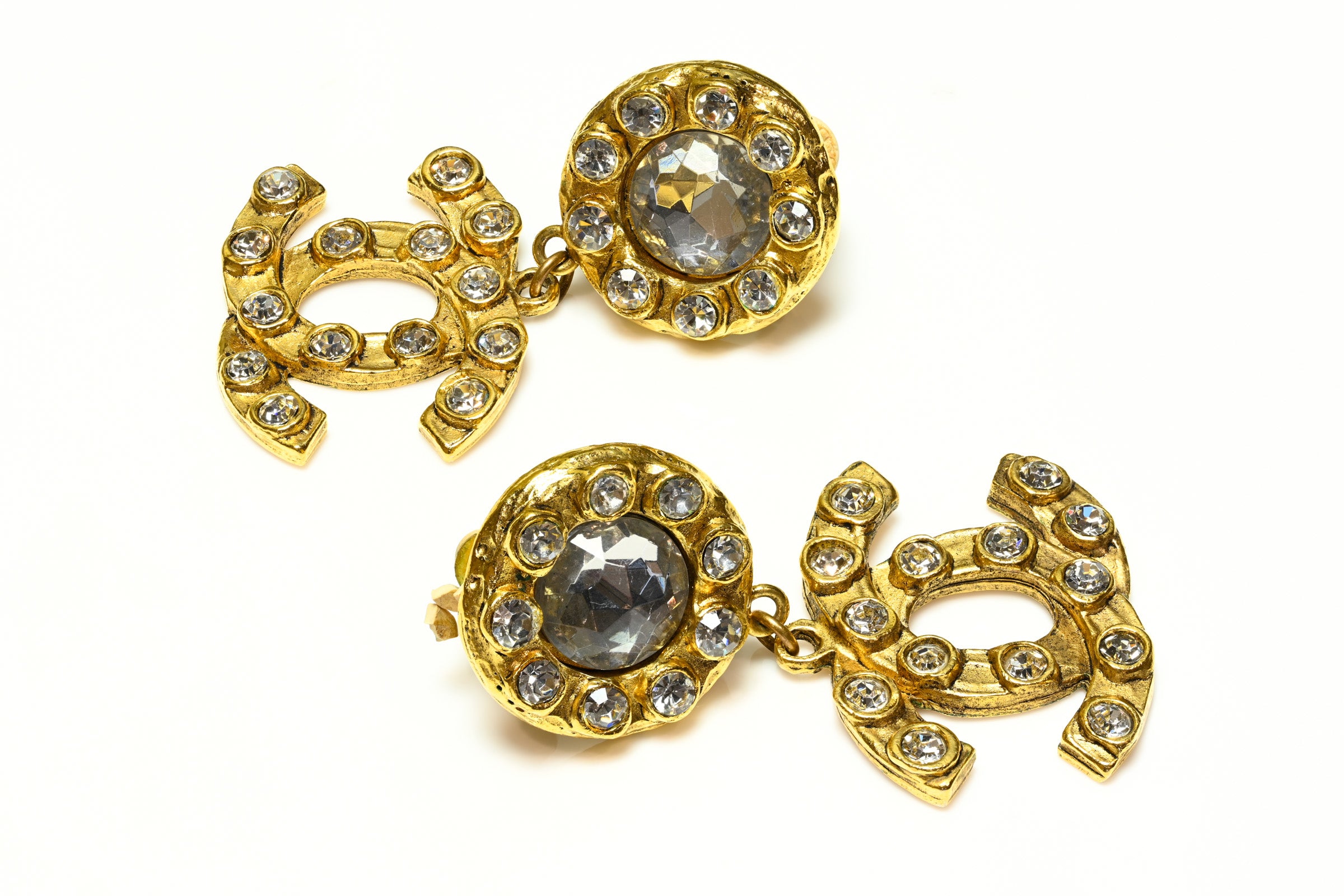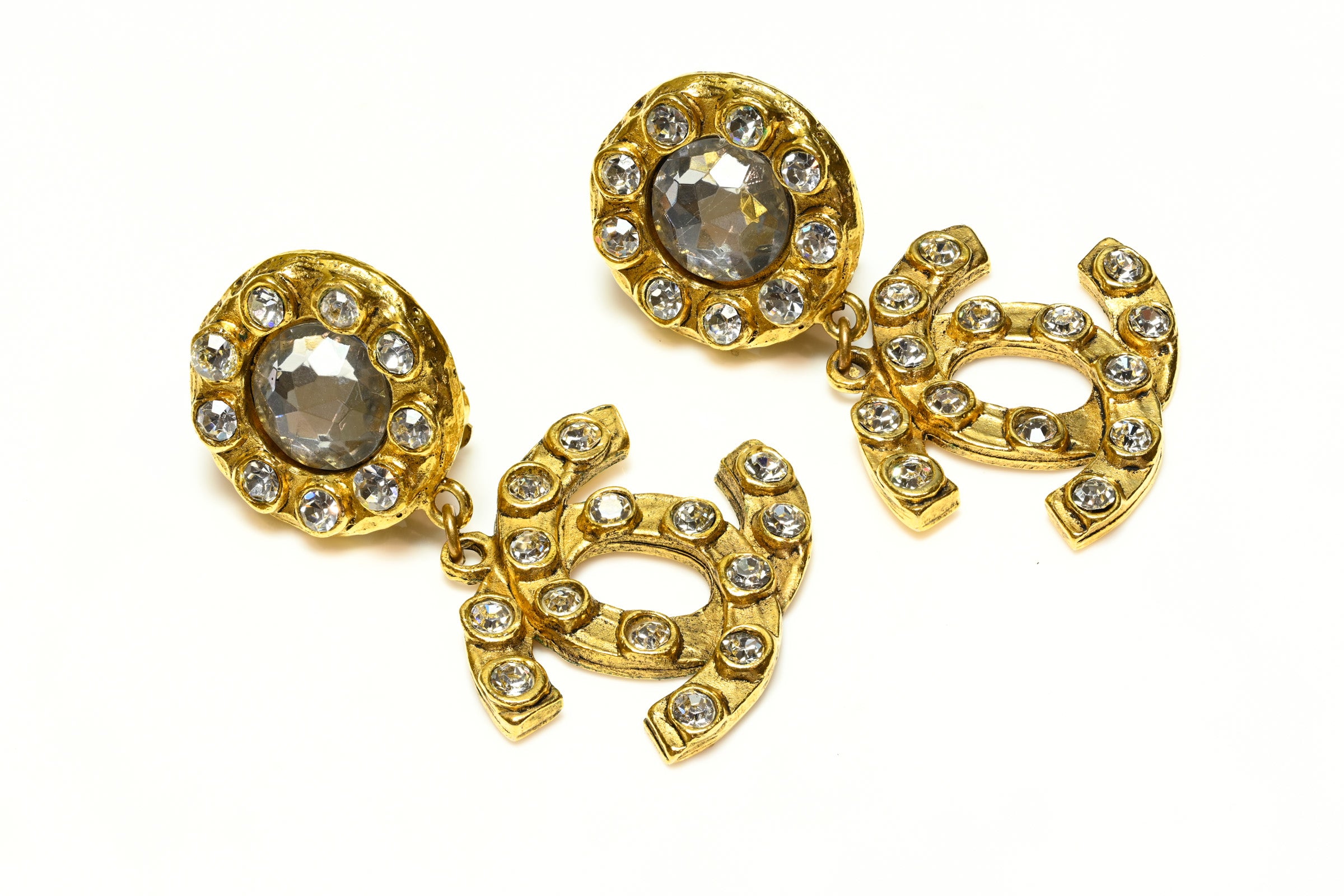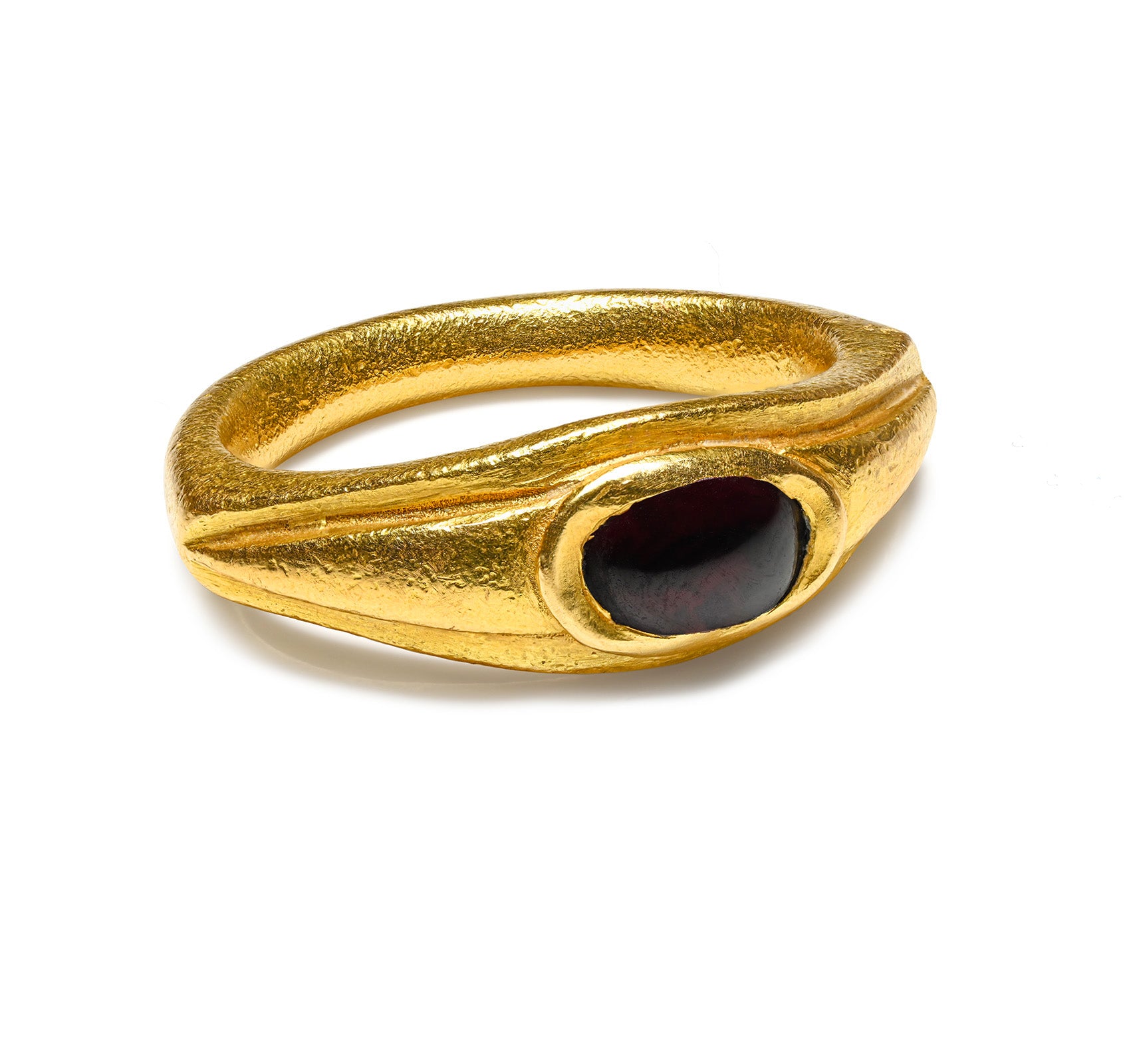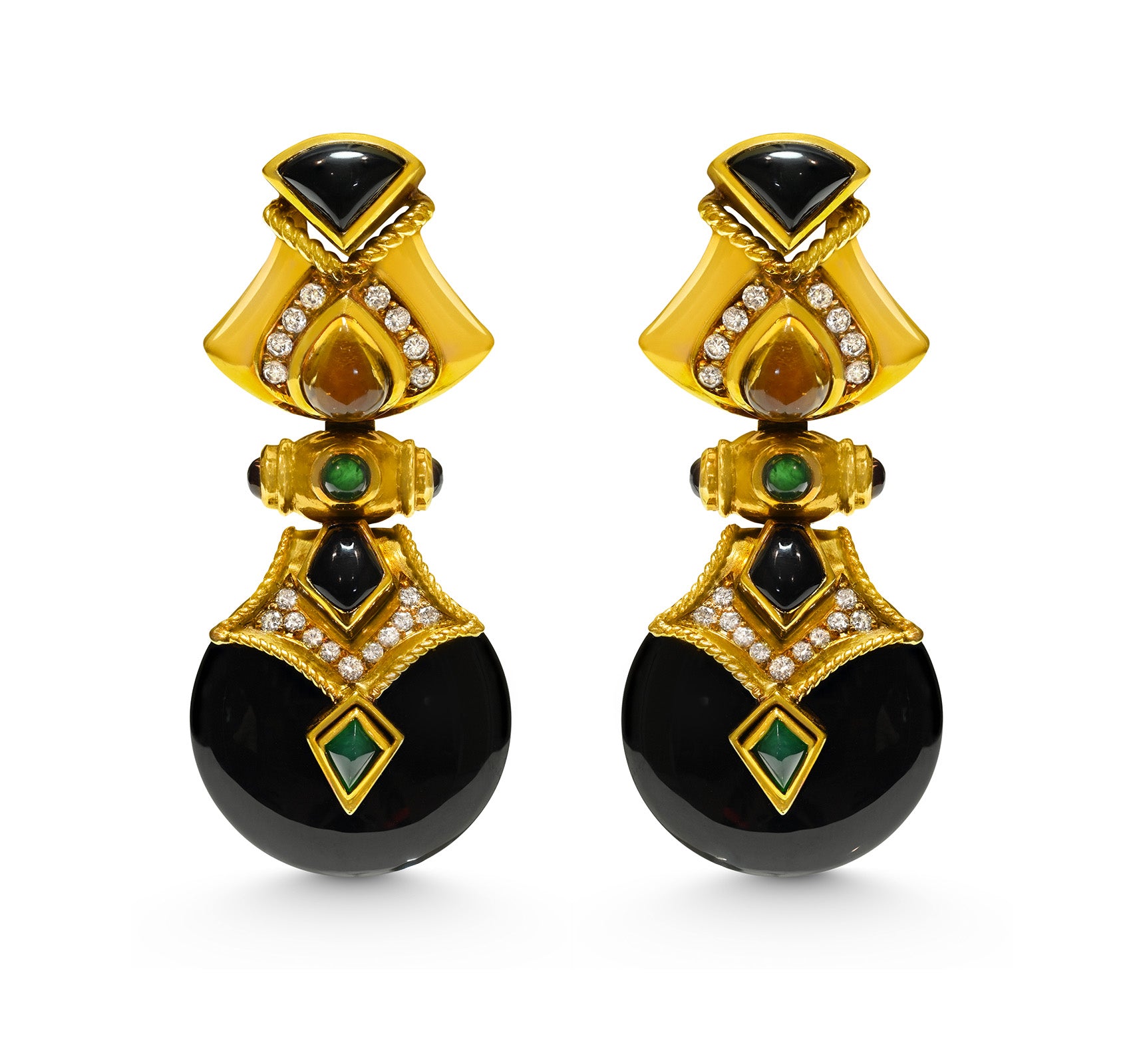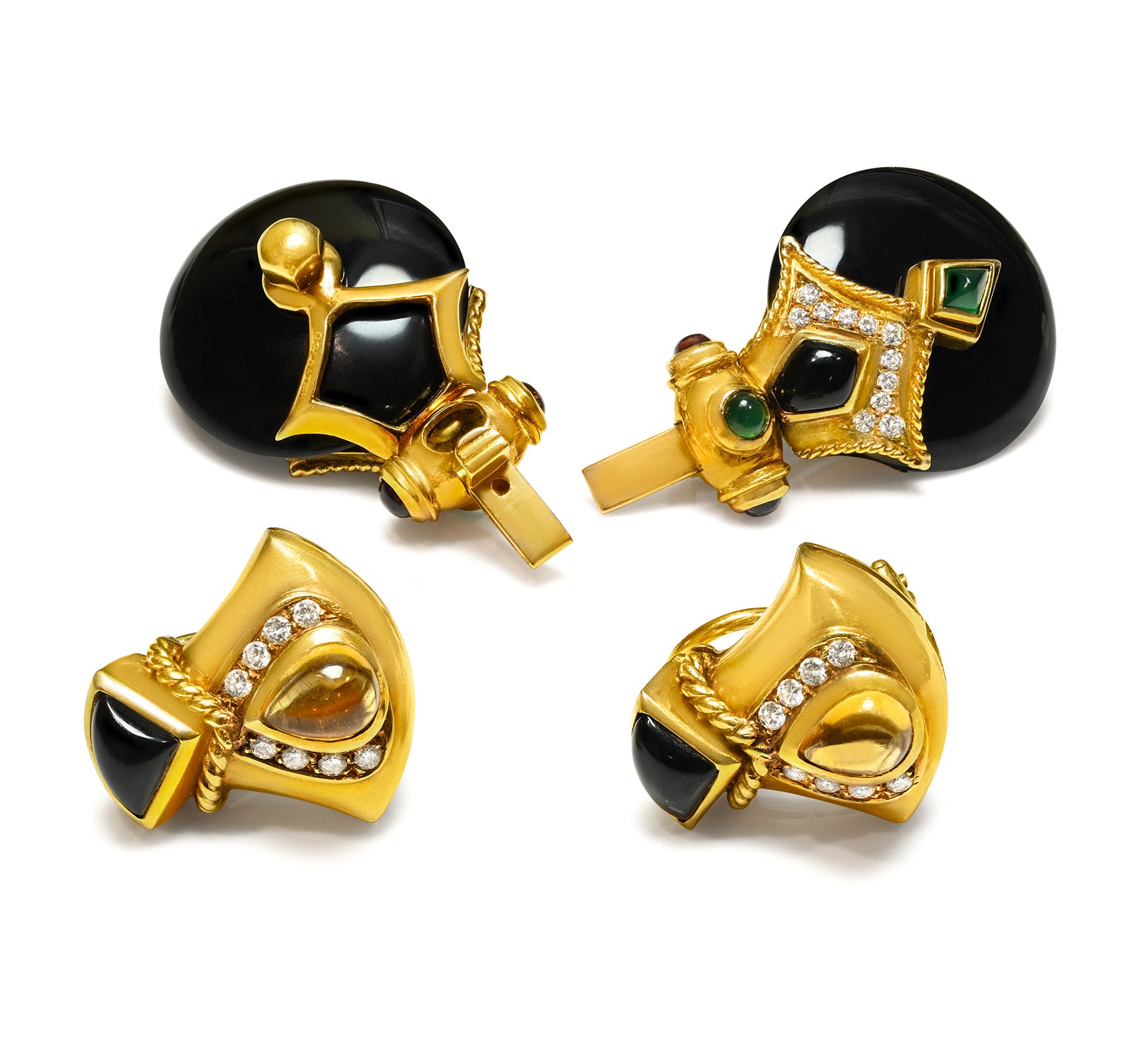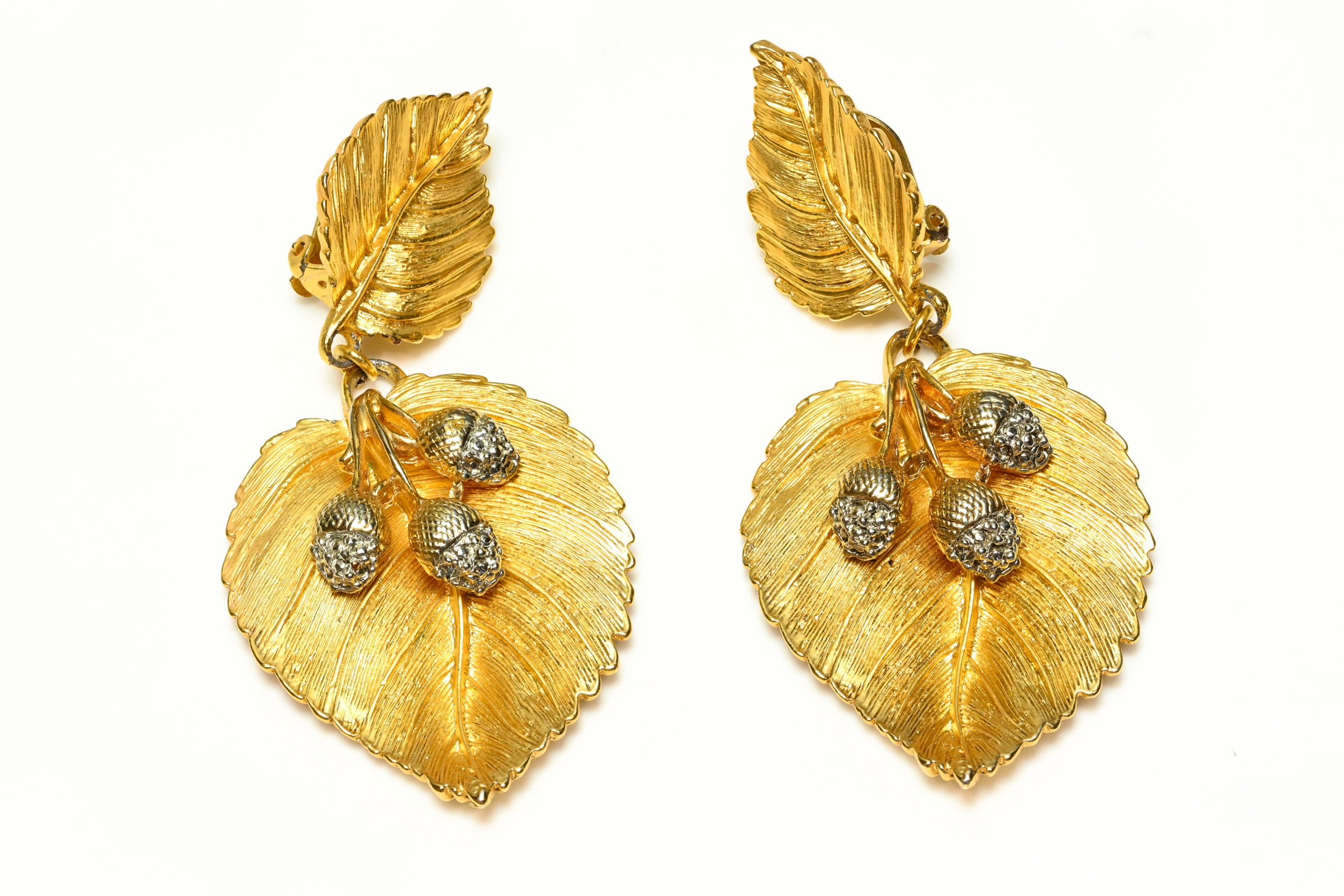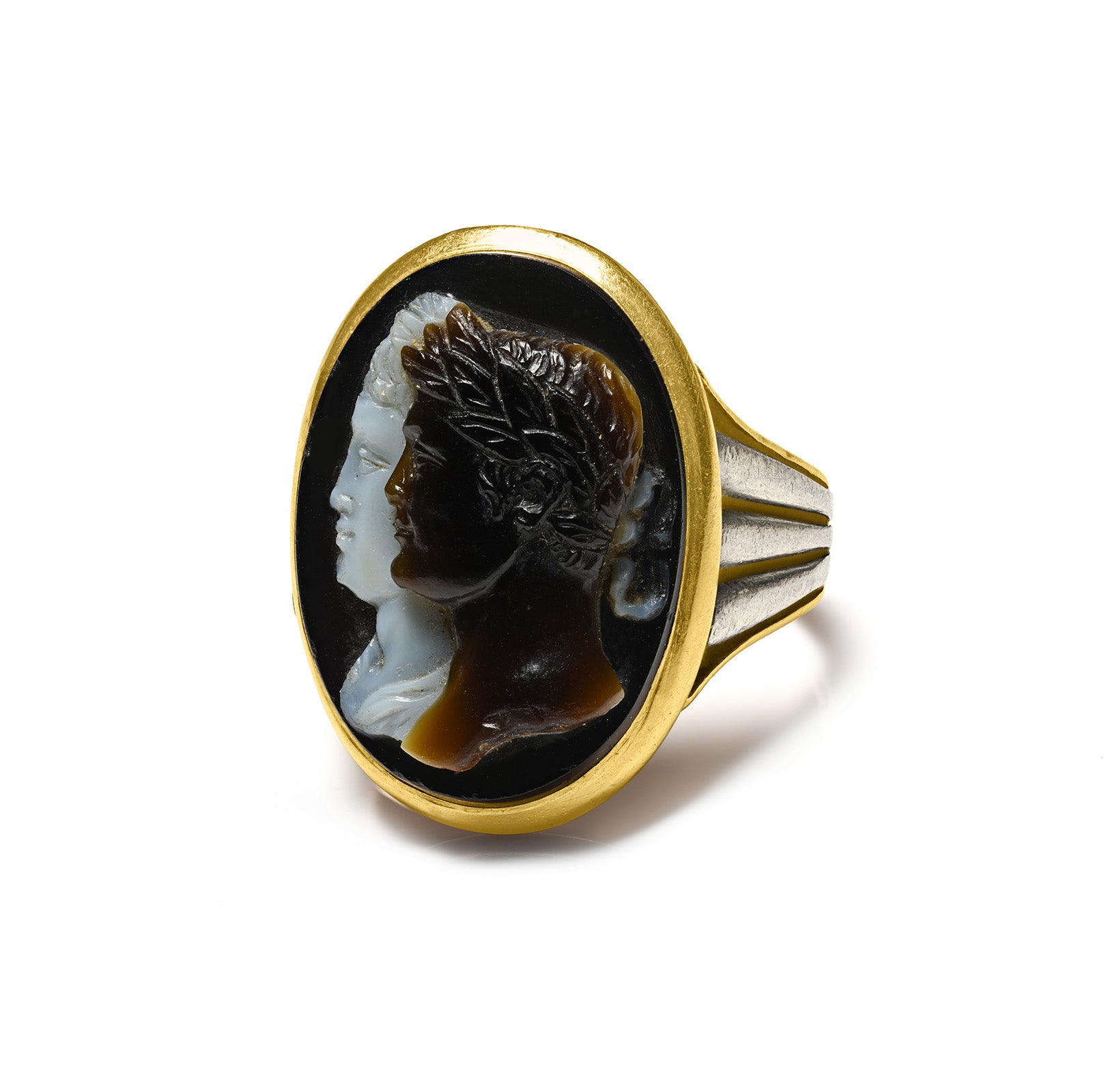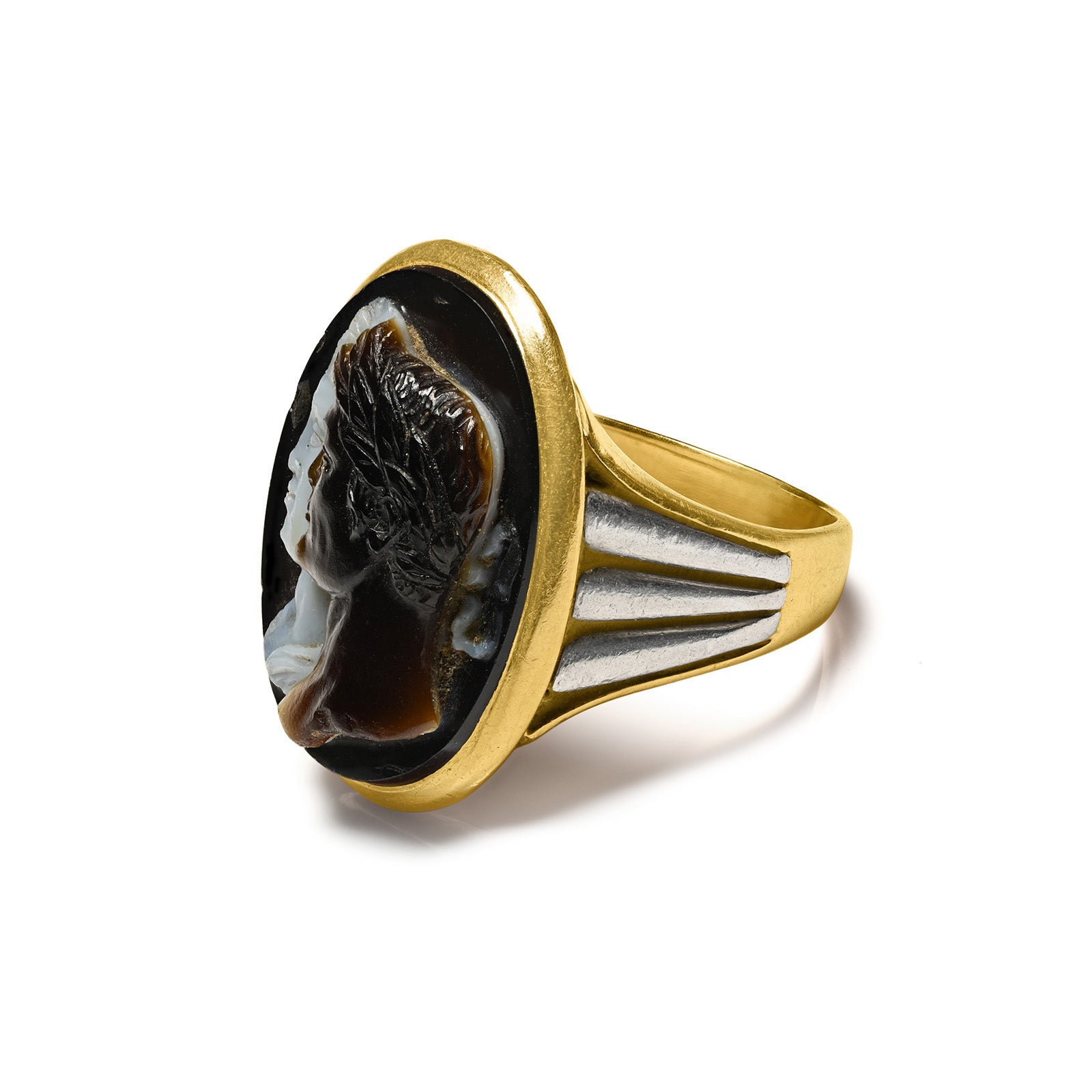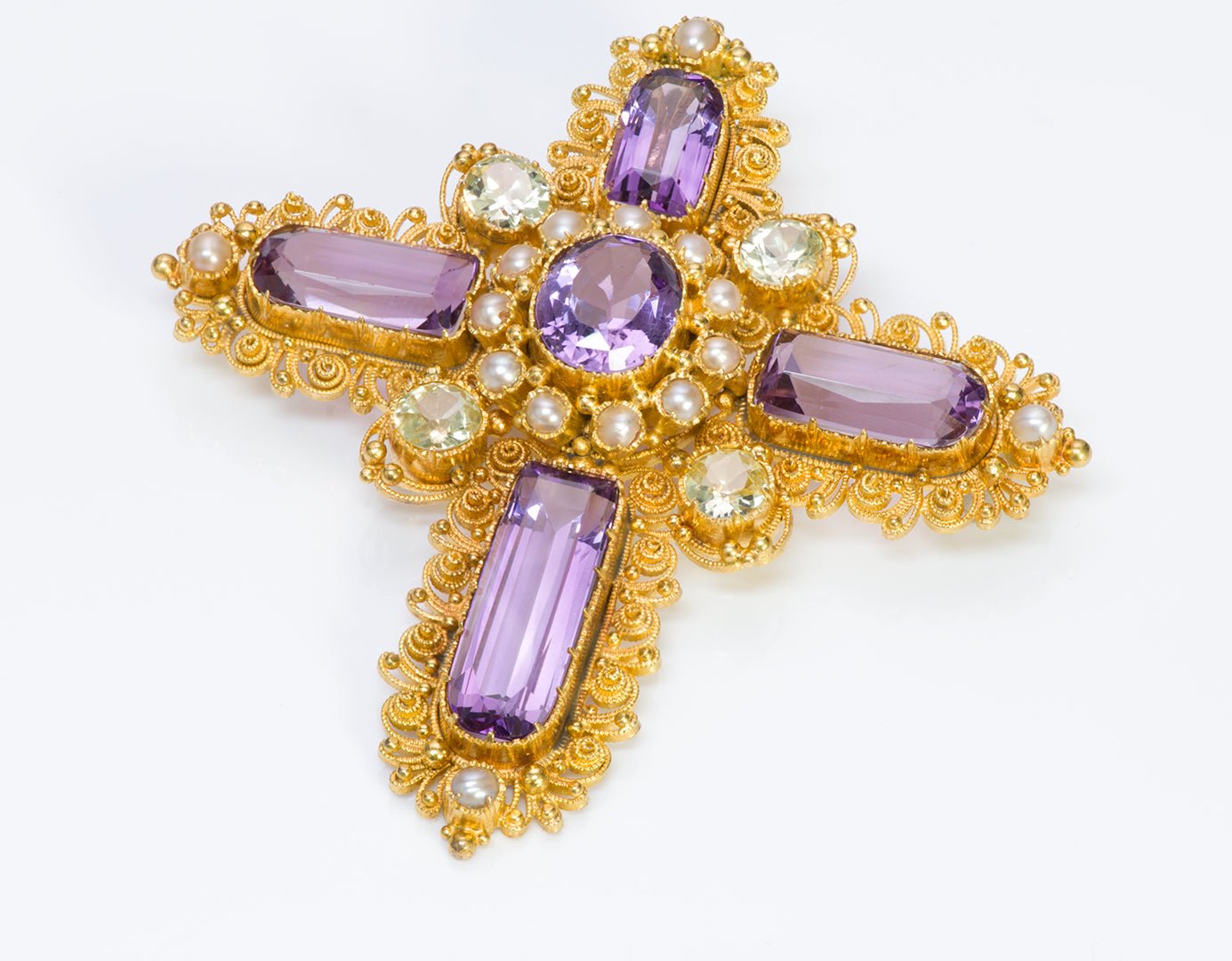
A Brief History of Antique Jewelry
Georgian Period Jewelry: 1714-1837
From Georgian times to today styles and designs of jewelry have changed, but our love for antique jewelry has never faded. For instance jewelers handcrafted all the jewelry of this period with labor-intensive processes. The artisans had to hand hammer the gold, silver or other metals into thin sheets before creating the pieces, and because of this process sometimes a slight asymmetric shape is noticeable to the jewelry of that era.
Handmade Georgian jewelry is very rare, making the quality of each piece of jewelry variable. It was often nature-inspired, featuring delicate designs such as leaves and birds. Georgian jewelry frequently includes foiled backed stones to enhance their brilliance.
The reasons for wearing jewelry are more personal than a basic desire for self-adornment. People have worn jewelry as a memento of loved ones, as an expression of faith or as a talisman to ward off evil spirits and even disease. It was believed by many that certain stones had magical powers, for example, that Topaz cured madness and increased wisdom and that Sapphire cured diseases of the skin.
Memento mori, meaning ‘Remember you must die!’ inspired Memento jewelry which appeared in the 16th century to remind people of their mortality. It was often decorated with enamel, skeletons, skulls, worms, coffins and crossbones. By the 17th century Memento jewelry was adapted to commemorate the death of individuals. Memorial rings, lockets, pendants and slides (worn on ribbons around the neck or wrist) contained backgrounds of hair or silk with symbols of skulls and crossbones under crystal.
By the second half of the 17th century memorial rings were being provided to distribute to friends and family after a funeral. In his will, upon his death, Samuel Pepys made arrangements for 128 rings to be despatched after his funeral.
By 1730, jewelry with unsightly crossbones and skulls was starting to be replaced by more neoclassical miniatures. Rings, pendants and brooches were decorated with sepia paint on ivory showing grieving women postured by urns, broken columns and tombs decorated with cherubs and weeping willow trees.
By 1781 silhouettes, which were cheaper than painted miniatures, became popular in jewelry. These were set in rings, pendants or brooches. Also quite popular was a miniature of a single eye, some set with a glistening diamond teardrop.
Techniques in the creation of jewelry pieces also altered. From 1672-1732 Pinchbeck jewelry was introduced as an imitation of Gold, invented by Christopher Pinchbeck. It was a mixture of alloy, copper and zinc and sold in large quantities.
It was eventually taken over by gilt metal, a process of gilding by which a base metal is plated or coated with a thin layer of gold. Between 1701-1773, paste jewelry invented by Georges Frederic Strass was available as a substitute for Diamonds. Paste is a high lead content glass cut to resemble Diamonds. Diamonds were purchased and worn by aristocracy, whilst paste jewelry was more affordable to the middle classes.
In 1813 Berlin Iron jewelry was founded at Gleiwitz in the Prussian province of Silesia. In Berlin, 1804, a factory had been established to produce iron objects both decorative and functional. As a response to a plea by the Prussian authorities for members of the aristocracy to donate their gold and jewels to the war effort against Napoleon, trade increased during the period 1813 -1815.
They were given Iron Work crosses, brooches, necklaces and bracelets some bearing the inscription “Gold gab ich fur Eisen” (I gave gold for iron) in exchange for their donated gold and jewels. Over 41,000 items of Berlin Ironwork jewelry were produced in 1814 alone.
Victorian Jewelry: 1837-1901
The development of jewelry showed a great change in the early Victorian era, culminating in the Romantic Movement. Nature hugely influenced design at this time which included flowers, leaves, buds and bunches of grapes.
In 1847, Louis Francois Cartier, who at 28 had finished an apprenticeship with a master watchmaker, took over his master’s Jewelry business located at 31 Rue Montorgueil, Paris. Cartier's son Louis Alfred took control of the business in 1874 and in 1899 moved the jewelry shop to Rue de la Paix, Paris. In 1904 Louis Francois Cartier died.
The great exhibition held at the Crystal Palace in 1851, London, provided a good opportunity for the jewelry industry to create interest and lead to increased manufacture. Jewelry trends again changed in 1860 and Greek, Etruscan and Egyptian styles became more favorable.
Mourning jewelry was still very popular in the early 19th century. In March 1861 was the death of Queen Victoria’s mother and later, in November, Queen Victoria’s husband Prince Albert died at the age of 42. The Queen went into deep mourning and black was to be worn by all those, also in mourning, across the nation. Once again, jewelry trends changed accordingly; this time to jet, cut steel and Berlin iron and later trends included tortoise shell and ivory. The vast majority of the really popular black Jet came from Whitby located on the Jurassic Coast of North Yorkshire..
As cut steel became more popular and in demand, brooches, necklaces, bracelets, hair pins, chatelaine and buttons were made. Cut steel jewelry was constructed from clusters of small faceted and polished individual studs riveted to a base plate and was produced in the small market town of Woodstock north of Oxford.
Berlin Ironwork was constructed from hard grey metal in The Royal Berlin Factory established in 1804, where jewelry equated to a small fraction of its total production. Other wares included keys, purses, buckles and boxes and on a much larger scale, objects such as gates, grills, balustrades and even bridges.
In the 1860’s and 1870’s the art of gemstone polishing had become more advanced. Colorful stones such as turquoise, garnet, carnelian and coral could be cut and polished to fit various settings in jewelry. Peter Carl Faberge, a Russian Jeweler, joined his father’s business in 1864 and in 1872 took over management of his father’s business. In 1882 Carl and his younger brother Agaton, attended the Pan-Russian Exhibition held in Moscow. It was here that the Tsar Alexander III took an interest in Faberge’s work and in 1885 he became the Tsar’s Court Goldsmith. Faberge went on to produce gem set Easter eggs for the Tsar’s mother and wife. He made many objects from fine jewelry to silver tableware. His company, enjoying huge success, became the largest in Russia with 500 employees and branches in Moscow, Odessa, Kiev, Saint Petersburg and London. Between 1880 - 1901 prosperity and economic growth meant vast quantities of jewelry were manufactured to satisfy the insatiable market.
Art Nouveau Jewelry 1880-1910
Through the mid 1880’s, Art Nouveau flourished and spread through Europe to America then later began to fade prior to World War 1. Naturalism influenced Art Nouveau jewelry, involving unusual designs within a symmetrical frame encompassing enamel, gemstones, pearls, leaves and foliage. During the 1880’s, specialist galleries in decorative arts were run by Samuel Bing in Paris and Arthur Lasenby Liberty in London. Liberty went on to launch designs by Archibald Knox. In America Tiffany’s was introducing their new designs. In Europe Rene Lalique established his reputation at the Paris Salon Exhibitions of 1895/96/97. A German, Ernest Murrle, who settled in London in 1884 was the founder of Murrle Bennett & Co, a competitor to Liberty. Further influencers of the Art Nouveau jewelry circuit were Sibyl Dunlop, Theodor Fahner, Dorrie Nossiter, Child & Child (Walter and Harold Child), Georg Jensen and Charles Horner.
Edwardian Jewelry : 1901-1910
In 1901, the eldest son of Queen Victoria became King Edward Vll. The Edwardian period was turbulent and this complex array of social, artistic and economic climate affected the craftsmen. Styling of this period became elaborate and produced intricate and fine jewelry. Designs included formal jewelry; tiaras, brooches, rings, earrings, pendants, bracelets and necklaces; many were set with precious and semi-precious gemstones.
Art Deco Jewelry: 1920-1935
Delicate diamond jewelry became less popular after 1918. During the war, women had worked alongside men leading fashion to become more mature and business-like. Jewelry became uncluttered with clean, defined lines, strong curves and geometric shapes. Black and white jewelry featuring Baguette cut diamonds and onyx were in demand. The double clip was used a lot in the form of a brooch which could be taken apart and used as two identical dress clips. 1922 saw the discovery of Tutankhamen’s tomb in Egypt having a huge influence on the period with the use of turquoise, coral and colored crystal within the construction of jewelry. Art Deco affected the design of jewelry, as well as in fashion, interior design, architecture, industrial design, film, visual arts, painting and graphic arts. Desirability for Art Deco design peaked in the 1920’s in Europe and surged after the Paris exhibition of 1925 and continued strongly in the United States of America through the 1930s.
Vintage Jewelry: 1940’s to 1980's.
The 1940's was the era for deep carved Bakelite, Lucite and Casein jewels, amazing costume jewelry and chunky beads. Bakelite was the first plastic made from synthetic components; beads of differing sizes in bright colors were used to create chunky jewelry. Murano glass jewelry was produced in large quantities in Italy for the export and tourist market in the 1950’s & 1960’s. To make affordable costume jewelry, diamantes, glass beads, and simulated pearls were produced in many colors and sizes. Masses of costume jewelry including cocktail rings, dress rings, beaded necklaces, bangles and bracelets were produced in heavy decorative styles.
The 1950's was an era that was forefront with American designers producing parures and suites signed by designers like Weiss, Coro and Trifari. Jewelry that was colorful and bold with enamel flower brooches and matching earrings in strong bright colors adorned those of the 'Flower Power' era of the 60’s. In the 1970's Britain still had a steel industry and jewelry was manufactured from Stainless Steel. Rings, cufflinks sets and big bold pendants are reminders of that Industry and era.



